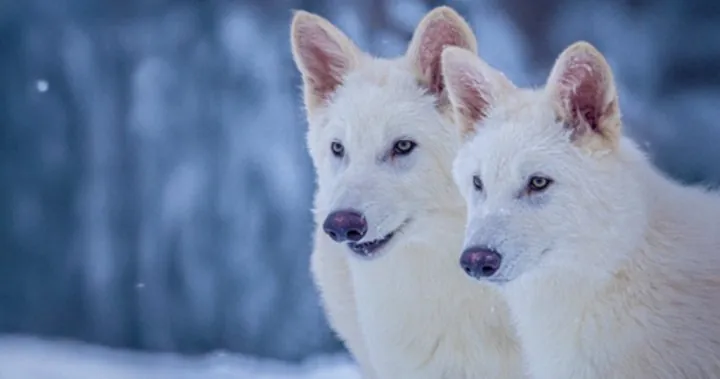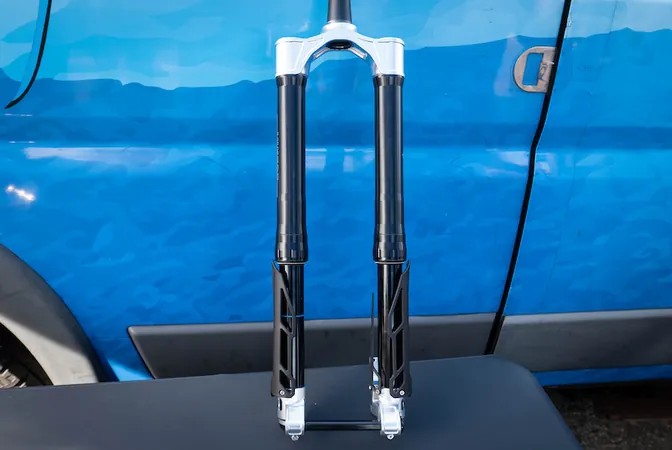
Dire Wolves Make a Comeback: The First Step in a Bold De-Extinction Journey!
2025-04-07
Author: Jacob
Forget about the mythical creatures from "Game of Thrones"! The dire wolf, a species long thought to be extinct, has taken its first steps back into our world thanks to innovative scientific advancements. Colossal Biosciences, a groundbreaking biology research company based in North Texas, has successfully engineered the rebirth of this colossal creature after more than 12,500 years of extinction.
Groundbreaking Announcement
In a groundbreaking announcement, Colossal reported the birth of three dire wolves, utilizing a combination of genetic material sourced from ancient fossils and cutting-edge gene-editing techniques. Borrowing inspiration from the Hollywood classic "Jurassic Park," where DNA from ancient species is mixed with that of their modern counterparts, the scientists extracted DNA from two significant fossils along with making 20 genetic modifications to create healthy dire wolf pups.
The Significance of the Newborns
The newborn dire wolves, affectionately named Romulus and Remus (the mythological twins) and Khaleesi, after the iconic character from the hit series, mark what could be a pivotal moment in biotechnological history. "We are excited about what this means for the future of conservation and biodiversity," claimed Colossal’s CEO, Ben Lamm. "This achievement shows that our advanced technologies can seriously impact species revival."
A Secure Habitat
These wolf pups are currently residing in a secure, expansive nature preserve that spans over 2,000 acres, safeguarded by ten-foot-tall fencing and advanced security systems. With a dedicated team of ten animal care professionals, Romulus, Remus, and Khaleesi are being closely monitored to ensure their health and well-being. Their habitat also includes state-of-the-art facilities for veterinary care and research.
Cultural Importance
Mark Fox, Tribal Chairman of the MHA Nation, emphasized the cultural significance of the dire wolf's return, stating, “The de-extinction of the dire wolf is more than just a biological event; it's a reflection of our connection to history and the responsibility we hold to protect our planet's biodiversity."
Future Ambitions
Meanwhile, Colossal Biosciences isn’t stopping with the dire wolf. The company has ambitious plans to resurrect other long-lost species, including the woolly mammoth. In a previous announcement, they unveiled the "woolly mouse," a genetically modified rodent containing mammoth traits. Their ultimate goal is to edit the embryos of Asian elephants, the closest living relatives to these ancient giants, paving the way for woolly mammoths to roam the Earth once more.
Conclusion
The fusion of technology and conservation is gaining traction, and with continued research and successful projects, we may soon witness the revival of more extinct species. Colossal Biosciences is turning science fiction into reality, demonstrating that the boundaries of nature are not as rigid as we once believed.
Stay tuned for what may be the most epic storyline in the saga of conservation yet!









 Brasil (PT)
Brasil (PT)
 Canada (EN)
Canada (EN)
 Chile (ES)
Chile (ES)
 Česko (CS)
Česko (CS)
 대한민국 (KO)
대한민국 (KO)
 España (ES)
España (ES)
 France (FR)
France (FR)
 Hong Kong (EN)
Hong Kong (EN)
 Italia (IT)
Italia (IT)
 日本 (JA)
日本 (JA)
 Magyarország (HU)
Magyarország (HU)
 Norge (NO)
Norge (NO)
 Polska (PL)
Polska (PL)
 Schweiz (DE)
Schweiz (DE)
 Singapore (EN)
Singapore (EN)
 Sverige (SV)
Sverige (SV)
 Suomi (FI)
Suomi (FI)
 Türkiye (TR)
Türkiye (TR)
 الإمارات العربية المتحدة (AR)
الإمارات العربية المتحدة (AR)